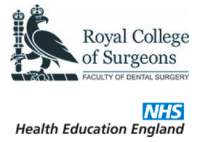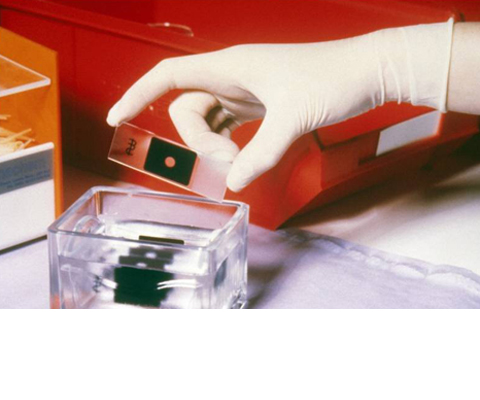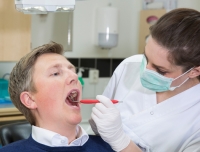The Role of Immunofluorescence course for Dental Practice



This session will introduce the basic principles and techniques of immunofluorescence. It will explain the difference between direct and indirect immunofluorescence tests, presenting examples of immunofluorescence and findings of autoimmune disorders manifesting in oral mucosa.
Learning Objectives
By the end of this session you will be able to:
- Describe the use of immunofluorescence in diagnosis of oral pathologies
- Compare the differences between direct immunofluorescence and indirect immunofluorescence
- Outline the principles of obtaining a good specimen suitable for immunofluorescence testing
Immunofluorescence uses fluorescence microscopy to detect the presence of an antigen. It was discovered in 1941, and first used to diagnose oral and maxillofacial pathology about 40 years ago.
Before commencing this session you should:
- Have a basic understanding of antigens and antibodies
- Be familiar with autoimmune diseases with orofacial manifestations
- Know how to take an oral tissue biopsy
Sabine gained her DDS (cum Laude) from the Riga Stradins University (former Latvian Academy of Medicine) in 2000.
After graduation, she worked in general dental practice and in the Oral Pathology Department at the Riga Stradins University. In 2003, she completed her MSc in Oral Medicine at University College, London, and in 2005 completed her MFDS exams at the Royal College of Surgeons (England). After working as a senior house officer in oral and maxillofacial surgery and in oral medicine, she obtained her MBBS from Barts and the London School of Medicine, University of London in 2009.
After foundation training in general medicine and surgery, she recently started her specialty training in Oral Medicine as Academic Clinical Fellow at University College Hospital, London.

- Medical and Pharmacology | Human diseases and medi...
- Posted By eIntegrity Healthcare e-Learning
- Posted Date: 2024-11-06
- Location:Online
- This session will describe rheumatoid arthritis (RA), systemic lupus erythaematosus (SLE) and Sjögren’s syndrome. It will also identify the medications used for each condition and consider the impact of each condition on dental care.
- Medical and Pharmacology | Human diseases and medi...
- Posted By eIntegrity Healthcare e-Learning
- Posted Date: 2024-11-06
- Location:Online
- This session provides an overview of some of the clinically important respiratory challenges you may come across as a dental practitioner.
- Medical and Pharmacology | Human diseases and medi...
- Posted By eIntegrity Healthcare e-Learning
- Posted Date: 2024-11-06
- Location:Online
- This session describes the signs and symptoms that may manifest in patients diagnosed with common renal problems and the relevance of common renal disorders to the delivery of dental care.
- Medical and Pharmacology | Human diseases and medi...
- Posted By eIntegrity Healthcare e-Learning
- Posted Date: 2024-11-06
- Location:Online
- This session will look at the relevance of common neurological disorders to the delivery of dental care by the dental practitioner.
- Medical and Pharmacology | Human diseases and medi...
- Posted By eIntegrity Healthcare e-Learning
- Posted Date: 2024-11-06
- Location:Online
- This session will look at the signs and symptoms of neurological disorders and how the dental practitioner may recognise them.






